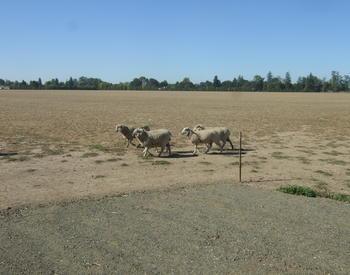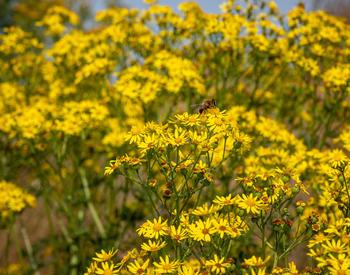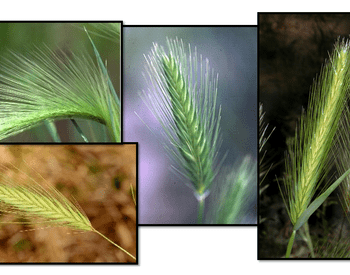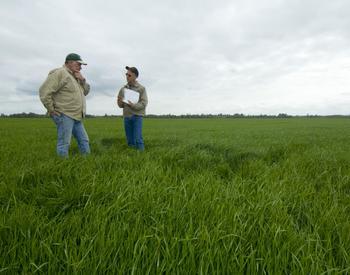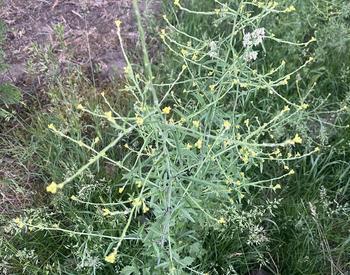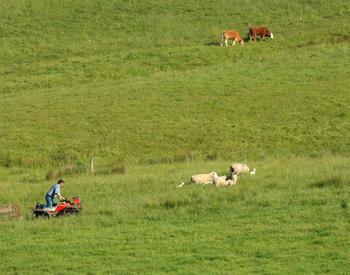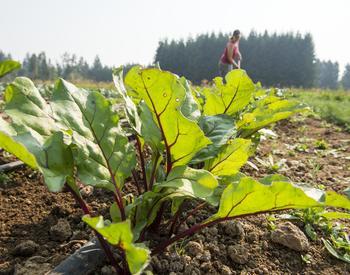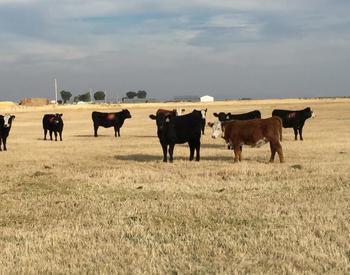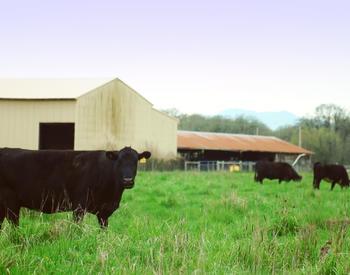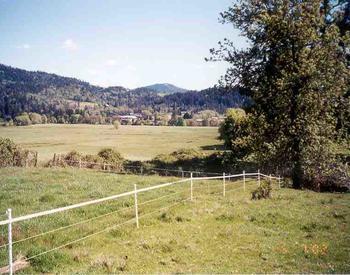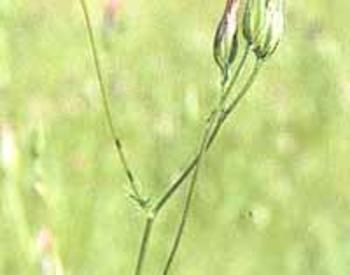Because of our typically wet springs in western Oregon, the average hay crop usually ends up being of low quality. However, when forage in the field is young and tender it is of high quality. As the forage matures, it becomes higher in quantity, but lower in nutritive value (low protein and energy, low digestibility, high fiber). But, when we should cut the hay for good quality, the weather is bad (raining and the ground is soaked) and we cannot dry the hay if we cut it. This happens almost every year. There are problems if hay is cut during rainy weather or laid down on saturated soils. Wet forage will rot on the ground if it does not dry properly. Also, rained on hay has nutrient losses through leaching. The forage can mold and be hazardous to livestock. And, wet hay bales can heat up and spontaneously combust. We occasionally get barn fires.
There always seems to be a window of opportunity to get an early cut of hay. Usually, there is one hot, dry week mid-spring when many "sharp" producers cut hay. Hay growers need to be prepared for that opportune week every year. They need to have their haying equipment all lined up (maintenance done, all fueled up, and hay crew set up). That brings up another problem we have here in western Oregon. Many people rely on someone else to cut their hay. The custom farmers have a long, long list of folks they service. If you are at the end (or even in the middle) of that list, you most likely get your hay cut later than optimal.
There are several other ways some farmers get good hay. One can choose late maturing varieties of grasses and legumes, or have livestock graze the hay fields in early spring and then let the fields re-grow before cutting in June. That way the forage is young and tender (high quality protein & energy) when cut later in the spring. Ranchers need to be careful that the livestock do not damage wet fields by hoof action (tear up forage or compact the soil). Another option is to cut high moisture balage or haylage. That is where forage is cut and wrapped up in silage-type bags or tubes and stored at high moisture content. You don't have to worry about drying the hay with this method because it is suppose to be put up wet. What happens is that the moist forge undergoes some fermentation, which stops when the bag runs out of oxygen and the pH drops. Later, the bags of forage are opened, one at a time, and fed to animals. Animals love it. The process is similar to putting up cabbage as sauerkraut. Because one can mow the field for balage earlier than they would for dry hay, the forage in that particular field is of higher quality than if cut later.
Late cut forage still has value. Cattle and sheep are ruminants and therefore have ruminal microbes that can digest the high fiber forage if provided a protein supplement to go along with the low quality hay. Alfalfa hay makes a great protein supplement and can be fed every third day to the livestock. The specifics on exact quality of the hay we put up and how much supplemental protein to feed need to be determined through forage testing and livestock ration balancing. Those topics are the top two reasons I am here in western Oregon as a livestock & forage specialist. Call me for more information or attend an educational program for livestock & forage production and management. For specific details on putting up great hay, see Haymaking on the West Side.
